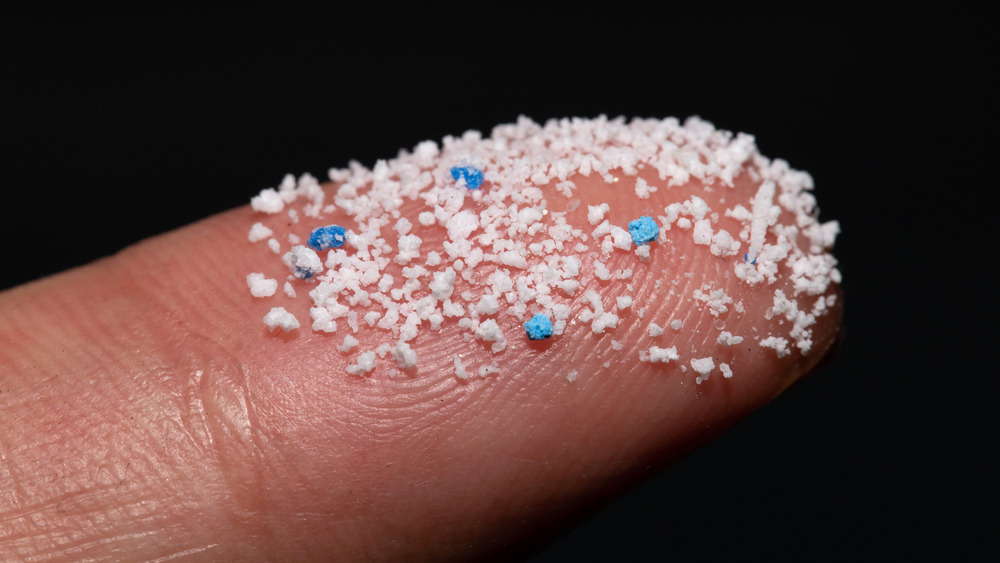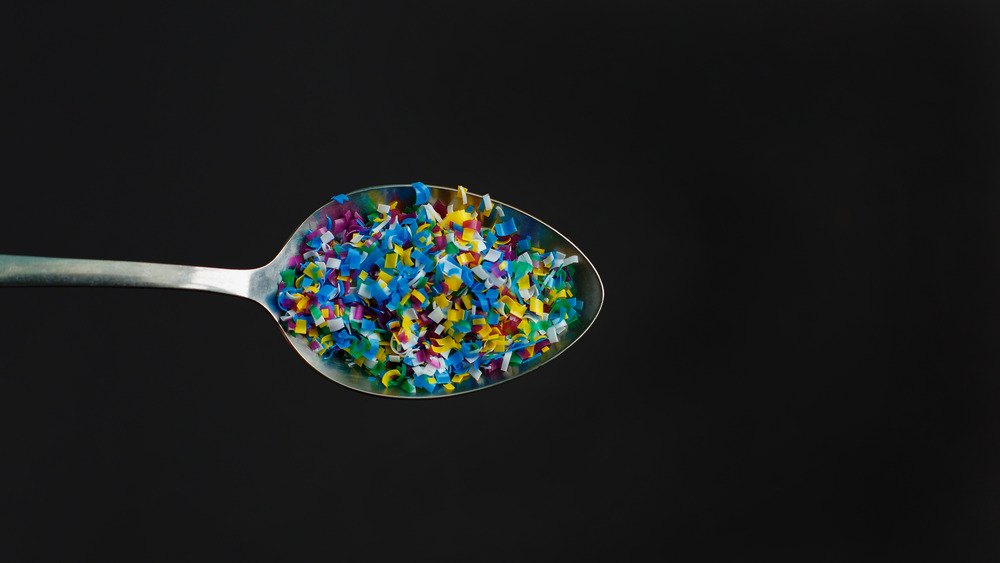There Might Be Plastic In Your Table Salt. Here's Why
Microplastics are plastic pieces of five millimeters or less that one can find in the environment due to plastic pollution (via Britannica). Alarmingly, Reuters recently ran a piece about Russian scientists discovering microplastics mingled in the snows across 20 different regions of Siberia and other studies have even shown that they can get into our table salt. In 2018, National Geographic published a piece detailing the findings of a study conducted by researchers from Greenpeace East Asia and the Incheon National University in South Korea. They examined 39 salt brands for microplastics and a staggering 36 brands contained plastics.
The three lacking plastics came from Taiwan, which used refined sea salt, China, which used refined rock salt, and France that gathered salt deposited by evaporation. Concentrations of microplastics in salts were higher in Asian brands than others. "The findings suggest that human ingestion of microplastics via marine products is strongly related to emissions in a given region," explained Seung-Kyu Kim, a marine science professor at Incheon National University.
Microplastics are a warning of a larger problem
There is plastic almost everywhere with the near certain inclusion of your table salt. So, of course we have consumed some. The question is how much and what such consumption does to us. In 2020, Discover Magazine wrote that Kieran Cox, a Hakai Scholar at the University of Victoria in Canada, estimated that we consume over 100,000 microplastic particles annually. For many, this will sound like a worrisome amount of plastic to ingest. However, Dave Love, a microbiologist at Johns Hopkins University, explained to Discover that the implications of this number are still unknown, yet, "Given our current understanding, it seems the best potential route for people wishing to mitigate their exposure to microplastic is to reduce their production of plastics waste." Specific waste in need of reduction are single use plastics.
However, as Scientific American covered in 2018, studies have already found that if microplastics escape the gut, they rub against walls of organs and the bloodstream, causing abrasions. Additionally, the chemical components can lead to further health problems. These studies, though, have only been carried out on animals. However, instead of worrying about if there is plastic in the snows of Siberia, we should be concerned with reducing the amount of plastics made every year, which leads to the pollutants dusting even the most remote places on our planet.

